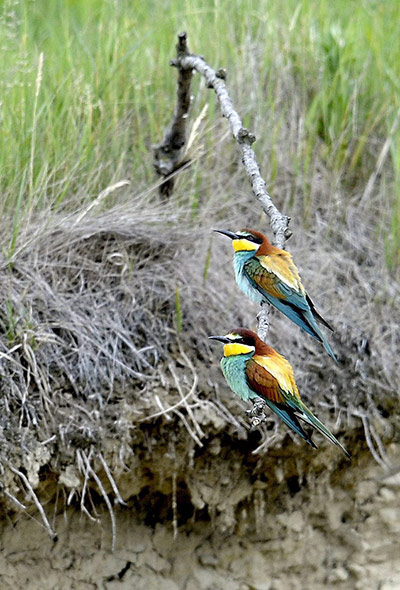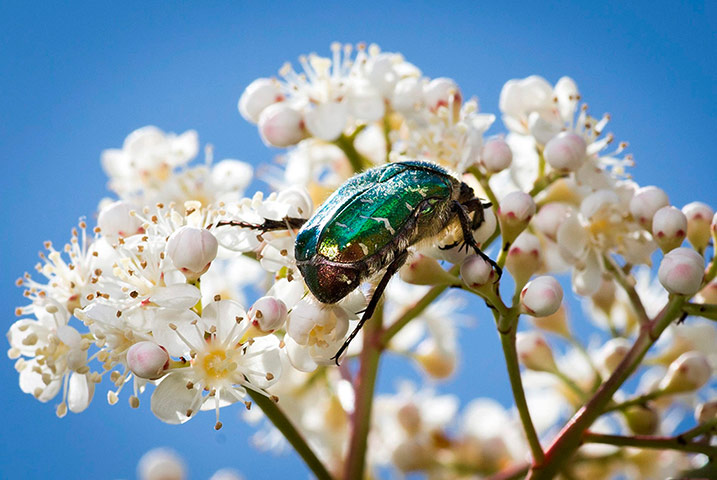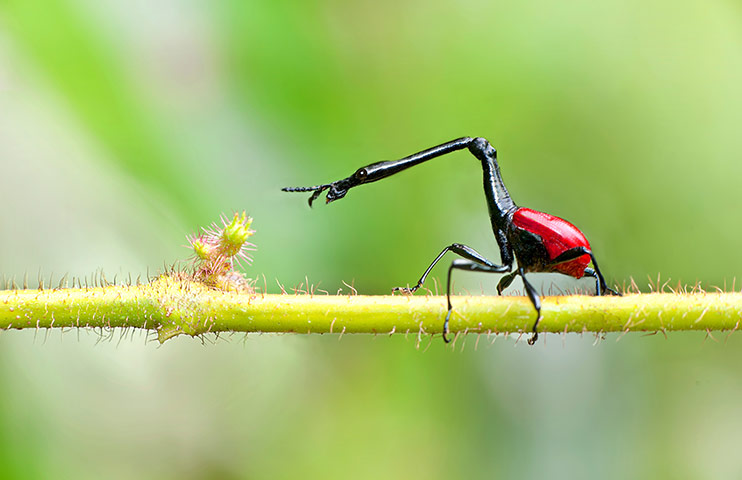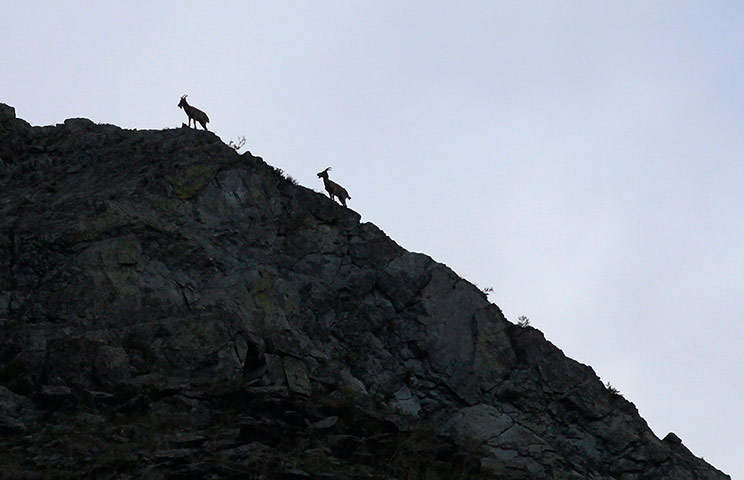@ossobuco,
Time for me to check out what is going on in The Week in Wildlife (The Guardian slide show):
http://www.guardian.co.uk/environment/gallery/2013/may/31/week-in-wildlife-in-pictures#/?picture=409730800&index=0
already I like the first photo -
Two bee-eater (Merops apiaster) birds in Poland. The birds feed on a mixture of bees and dragonflies.
Photograph: Darek Delmanowicz/EPA

A rose chafer climbs over blossom in Frankfurt, Germany.
Photograph: Frank Rumpenhorst/EPA

A white-tailed sea eagle at the Isle of Mull, Scotland, cleanly snatching a fish from the water. White-tailed sea eagles became extinct in Britain in 1916 and the species disappeared from the wild for over 50 years. It wasn't until 1975 that the first formal reintroduction was carried out, with a total of 140 birds returned to the wild over the course of 20 years. These birds have gone on to establish a population of over 80 breeding pairs on the west coast of Scotland. Despite this it is still rare to see the winged hunters showing off their fishing prowess.
Photograph: David Gibbon/Rex Features

A close up of a giraffe-necked weevil in Madagascar, Africa. British photographer Dale Morris spent a month snapping dozens of species, including chameleons, lemurs and insects like the giraffe-necked weevil.
Photograph: Dale Morris/Barcroft Media

Siberian mountain goats climb at the Sayano-Shushensky Nature Reserve, about 680 km (423 miles) south of Russia's Siberian city of Krasnoyarsk. The reserve is known as a habitat for a small population of snow leopards.
Photograph: Ilya Naymushin/Reuters

Mountain goats generally amaze me.
A Malayan night heron (Gorsachius melanolophus) feeding its young who live in a nest on a tree at Taipei zoo, in Taipei, Taiwan. Malayan night herons live in south-east Asia, often found near water or in city parks. They eat earthworms, insects, frogs and lizards.
Photograph: TAIPEI ZOO/EPA
I'm pretty fond of night herons, unless they're in my own small yard. There was a big flock of them down the street from us, nesting in some poor woman's ficus tree. Many of them together can be very loud. Oh, and messy.

I left a bunch of photos out (there were 15..)